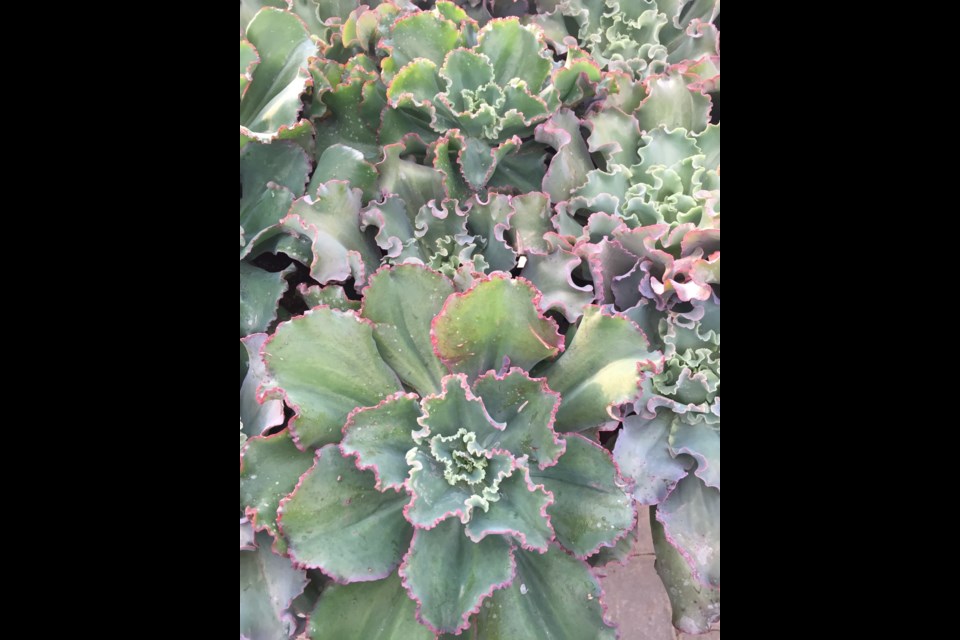How many of you are growing succulents in your yard in the summer? What a difference they make to the care needed right! Succulents have taken us from needing to hire a plant sitter while we go on summer holidays, to just needing someone to check the cats! So, you have grown and cultivated the most beautiful succulents all summer long (by neglect) then you bring them in your home for the winter and start to nurture them by watering every week (just like your tropicals need, right?). Now you don’t know what is wrong with your succulents, they are starting to turn to mush and fall apart…. what is wrong?
Ok here is the routine you need to follow for succulent success in your home over winter!
First: give your succulent plants a shower treatment (in the sink or the tub – wherever they fit best) then change their soil (unless the soil drains extremely well). Succulents do not like to have wet feet! Succulents need to have moist to dry soil. How to achieve this is to figure out how long it takes to dry out the soil after a watering. This will help you determine how much water to put into the soil in the first place. This will clean off little hitchhikers (bugs) that can damage your succulent when it is moved into the house.
Second: use insecticidal soap or Endall spray on the plant and then mix up a solution that can be applied to the root by watering can. This should be a regular part of your winter maintenance in succulent care. If you are unsure about the needs of your particular type of succulent, call a local professional to help you; looking up the answers on Google can help but local area help is usually more reliable.
Third: fertilizer is used by all plants to help them develop healthy roots, stems, leaves and flowers. Succulents stop actively growing in winter and store so much fluid in their leaves they have very low water requirements, is the best and stop fertilizing (because they will store the nutrients with the fluid in their leaves) from November to January. In February start with a half dose of the recommended fertilizer then resume regular fertilizing in April. As the days get longer, the plants will be able to use the fertilizer more efficiently and develop new growth. Use an appropriate succulent fertilizer. Talk to your local succulent professional.
Finally: make sure you have adequate light. Bright, sunny rooms are great but if you don’t have a bright enough area your succulents will start to stretch and lose their shape. This can be corrected by giving artificial light. Set a lamp close to the succulents and put in a full spectrum light bulb. Check your local lighting store for the right bulb to use.
Until next time, have great winter season.
Leslie Cornell
The views and opinions expressed in this article are those of the author, and do not necessarily reflect the position of this publication.




